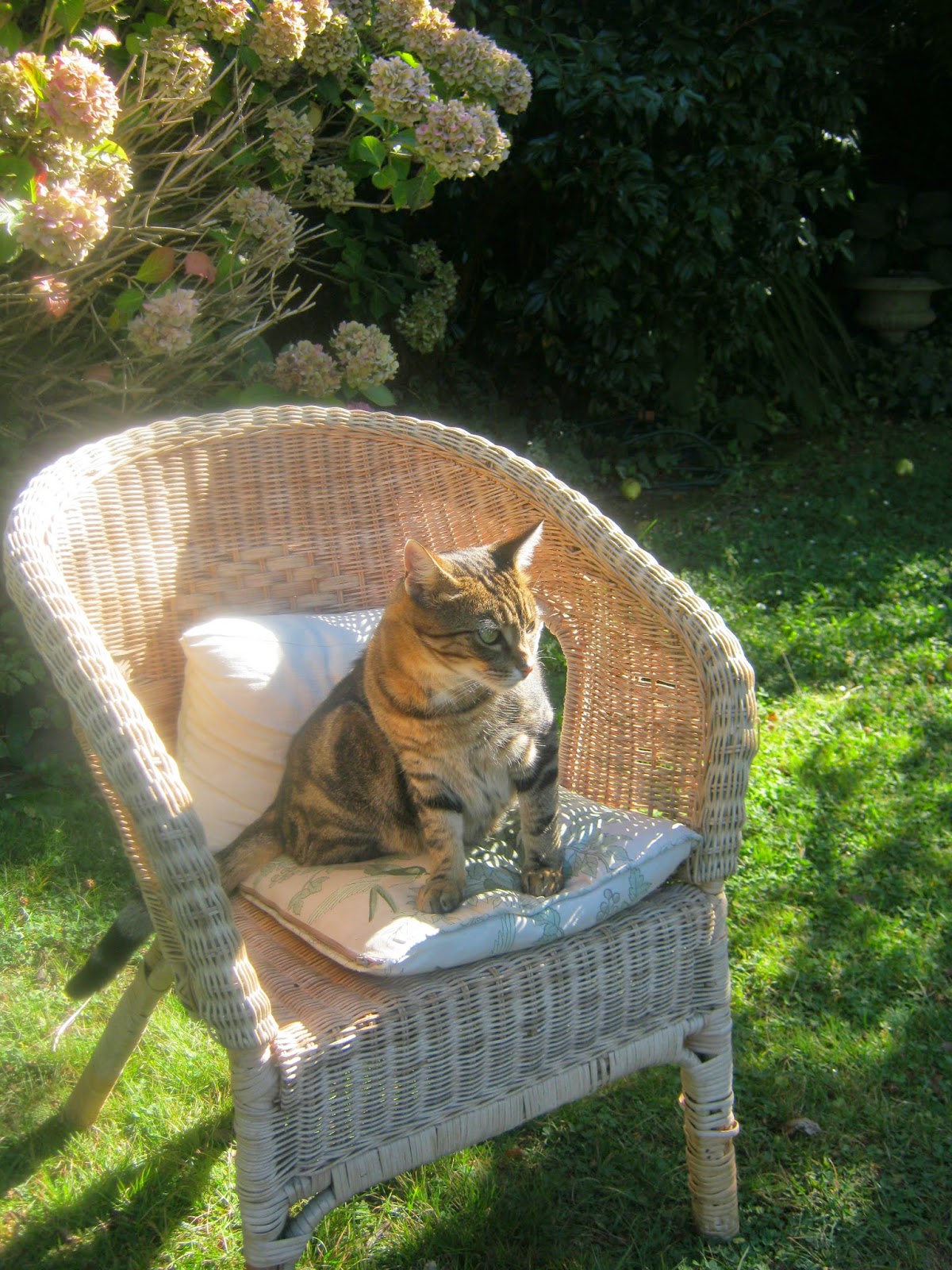Autumn advances little by little here in NZ. The rudbeckias are out;
the morning sun is a little more subdued and sometimes the air is foggy, but a cat can still enjoy sitting out in the wicker chair. The evenings are drawing in, and there's only a few weeks to go before the end of daylight saving. I've had a little blogging break while I've been on holiday, reading and viewing loads of things. My picks:
Roz Chast is a cartoonist with the New Yorker magazine. This is her tribute and record of her parents' decline into old age and death. It sounds depressing, but is often funny and thoughtful, and those of us who have had to deal with aging parents will recognise many of Roz' observations and concerns. It had special resonance for me, as Roz is also an only child of parents who grew up in the Depression, when talking about unpleasant things was considered inappropriate (as we would say today). My mother used to use this very phrase whenever something came up that she was not comfortable discussing.
I also watched 'Daniel Deronda" again. Loved everything about it, the acting, the story, the costumes. Hugh Bonneville plays what has to be one of the nastiest pieces of work in fiction. And gorgeous Hugh Dancy has the more difficult part of playing a good and earnest young man, and carries it off convincingly.

I've wanted to see this movie for a long time, having heard a great deal about it. It's rather stagey in some parts, and you sometimes wish they'd turn the background music off, but that was the fashion in movie-making at the time (1963). Odd to see Burt Lancaster as a Sicilian count too, but he carries it off well. Claudia Cardinale is stunning, you just know that she is going to be the cat among the pigeons of the fading aristocracy that she will marry into. She is an interesting person. Born in Tunisia of Sicilian parents, her mother tongues were French, Siciliano and Tunisian Arabic. She only learned Italian after she had begun making movies in Italy, and her voice was dubbed in her first few movies because it was considered too hoarse and deep for an actress.
And the costumes! Worth seeing the movie if only for these!































